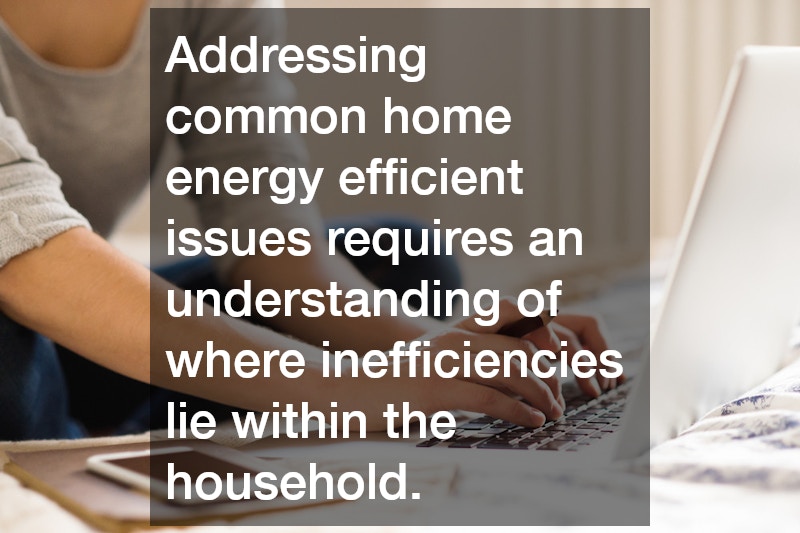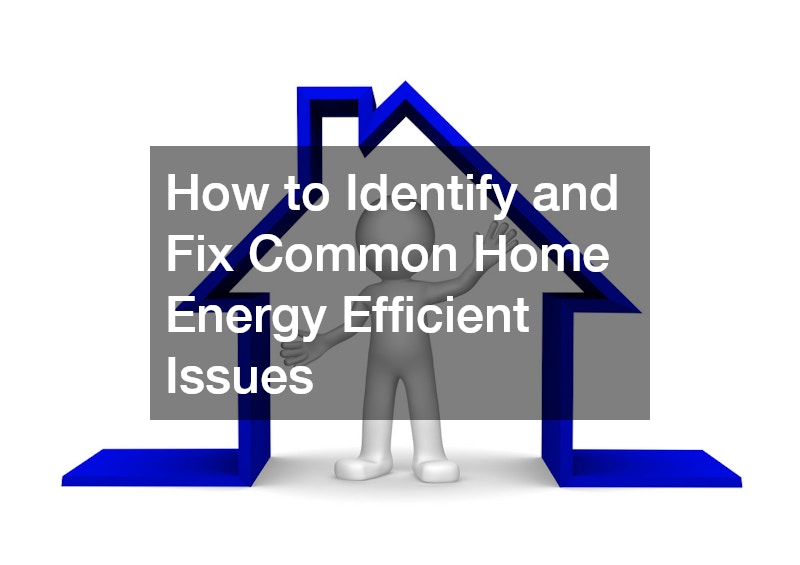In today’s world, energy efficiency is not just a buzzword—it’s a necessity. As homeowners, understanding how to manage and optimize energy use can lead to significant cost savings and environmental benefits. However, many homes suffer from common energy efficient issues that may not be immediately obvious. From outdated appliances to poor insulation, these issues can contribute to excessive energy consumption and unnecessary expenses. This article aims to guide you through identifying these common problems and providing practical solutions for a more energy-efficient home.
Understanding Home Energy Efficient Issues
Home energy efficient issues are problems that lead to excessive energy consumption within a household. These issues can arise from a variety of sources, including inefficient appliances, poor insulation, and lack of proper ventilation. Identifying these problems early can prevent unnecessary energy waste and reduce utility bills. One of the most obvious indicators of energy inefficiency is an unexpectedly high energy bill. Homeowners should be proactive in monitoring energy usage patterns to detect anomalies that might point to underlying issues.
Sometimes, simple habits like leaving lights on or setting the thermostat too high can significantly affect energy consumption. Additionally, the age of the house and the materials used in construction play a crucial role in determining its energy efficiency. Older homes are often less insulated, leading to higher energy demand for heating and cooling. Evaluating window seals, door frames, and other possible air leak sources can provide insights into a home’s energy efficiency level. By understanding these factors, homeowners can create a targeted plan for improving energy efficiency.
Another common source of inefficiency comes from outdated appliances which operate with less energy efficiency compared to modern, ENERGY STAR-rated models. These older models consume more power to perform the same tasks, leading to higher utility costs. Replacing these appliances with more efficient versions can result in immediate energy savings. It’s important to note that while the initial cost of upgrading appliances may be significant, the long-term savings on energy bills often justify the expense. Regular maintenance, such as cleaning filters and checking for faults, can also help optimize appliance efficiency.
Checking and Improving Insulation
Poor insulation is one of the most common home energy efficient issues, especially in older homes. Insulation is critical because it helps maintain a stable indoor temperature, reducing the need for heating and cooling systems. To identify inadequate insulation, homeowners can look for drafts near windows, doors, and attics. Moreover, uneven temperature or cold spots in rooms may also indicate insulation problems. A professional energy audit can help pinpoint areas that require improved insulation.
Improving insulation involves adding or upgrading materials in walls, attics, and sometimes foundations. Modern insulation materials such as spray foam, fiberglass, or cellulose offer excellent thermal resistance and are environmentally friendly. Sealing gaps and cracks with caulk or weather-stripping can also reduce energy loss. Adding programs to improve home energy efficiency, like installing smart thermostats, can further enhance the climate control within the home. These tools allow for better management of heating and cooling systems, ensuring energy isn’t wasted when it’s not needed.
Enhancing Appliance Efficiency
Inefficient appliances contribute significantly to household energy consumption, making appliance efficiency crucial for an energy-smart home. To start, homeowners should assess their current appliances, noting the age and condition of each device. ENERGY STAR-rated appliances are recommended, as they operate using less energy than standard models. When considering replacing appliances, it’s crucial to calculate both the initial purchase cost and the potential long-term savings from reduced energy bills. Extra considerations, such as the size of the appliance relative to family needs, can prevent overuse or inefficiency.
In addition to upgrading appliances, regularly maintaining existing units is essential for optimal efficiency. Simple actions like cleaning filters, defrosting freezers, and ensuring proper ventilation can extend an appliance’s life and efficiency. Dishwashers, refrigerators, and HVAC systems should be serviced by professionals periodically to ensure they operate at peak efficiency. Technology solutions, such as smart plugs or timers, can automate and optimize appliance usage to further enhance efficiency. These small actions contribute to substantial energy savings over time.
Addressing common home energy efficient issues requires an understanding of where inefficiencies lie within the household. By focusing on proper insulation, updating appliances, and optimizing their use, homeowners can significantly reduce their energy consumption. This conscious approach not only lowers utility bills but also lessens the environmental footprint of energy usage. Ultimately, small, consistent efforts can lead to substantial improvements in home efficiency. Homeowners seeking to bolster their home’s energy efficiency can create a sustainable and comfortable living environment through these proactive strategies.





